
10 BEST WAYS TO TEACH KIDS GRATITUDE
Are you at a loss of how to have grateful kids? Instilling children with gratitude in this world of instant gratification, social media and overindulgence can be mindboggling. I get it, I’ve been there. Heck, I have felt like a victim of all those things as well. Years of research and trial/error, in the classroom and at home, have put me in a place where I think an attitude of gratitude has gotten pretty good. Are we perfect at this? Absolutely not! But I’m not going for unattainable perfection, I’m going for each day just being better.
Countless studies, books, articles, podcasts, YouTube videos, and documentaries have shown the importance of kids practicing gratitude. Need convincing?
Here are some benefits:
- HAPPIER-MORE OPTIMISTIC-ENERGETIC
- MORE COMPASSIONATE
- INCREASED CONCENTRATION/ENGAGEMENT IN SCHOOL
- INCREASED SELF-ESTEEM
- BETTER SLEEP
- DECREASE IN AGGRESSION
- ABILITY TO COPE WITH STRESS BETTER
One study in 2019, from the Journal of Happiness Studies, found that there’s a direct relationship between happiness and gratitude in children as young as 5! Those who participated at a young age grew up to be happier people.
Are your kids older? There’s still hope! In 2011, a study by Psychological Assessments found that grateful teens were less likely to become envious of others, depressed, anxious, materialistic, or lonely. They were more engaged in their community and school, leading to better grades and improved overall mental health.
Psychologist Robert Emmons has spent almost his entire life studying gratitude. In Thanks! How the New Science of Gratitude Can Make You Happier, he says that, “few things in life as integral to our well-being and happiness as is gratitude”.
Let’s get to it, HOW?
here are 10 ways that can change your child’s life (and yours as well):
1. Saying please and thank you-
Yes, we probably all know that these are good manners, but it’s also an important first step in the gratitude process. Saying “please” and “thank you” shows appreciation, whether you’ve made your kids say it or not, and that appreciation will end up becoming genuine gratitude later. Studies show saying thank you also has HUGE benefits that you may not even think about: it has shown to increase not only your happiness but also makes others feel appreciated, thereby increasing their happiness.

We also need to remember the power of making someone else feel good, important, and appreciated. What goes around comes around. When you make someone feel good, they are more apt to pass that feeling to someone else and more willing to do something good for you in the future.
2. Writing thank you notes-
Notice: WRITING thank you notes. I’m not talking about email, texting, or calling someone and thanking them but actually writing and/or drawing a note to express appreciation. There is just something about hitting that pen/pencil to the paper. Numerous studies have shown how writing thank you notes on paper has a more positive attachment to gratitude, increasing happiness. Writing a note versus other ways has been shown to increase health and well-being more. One reason is that it takes extra effort, so the child is connecting and investing more into the gratitude process. It’s more authentic.

Another wonderful thing? Researchers at Indian University have found that handwriting in kids stimulates more brain activity than tracing letters/words whereas typing barely stimulated the brain at all. Writing things out is good for your brain! Who doesn’t love that?
For little ones, though, have them trace “thank you” or draw a picture. It’s good practice for them just to know they should send a thank-you note to someone. And let’s face it, they will love to go to the mailbox!
3. Giving thanks before mealtime
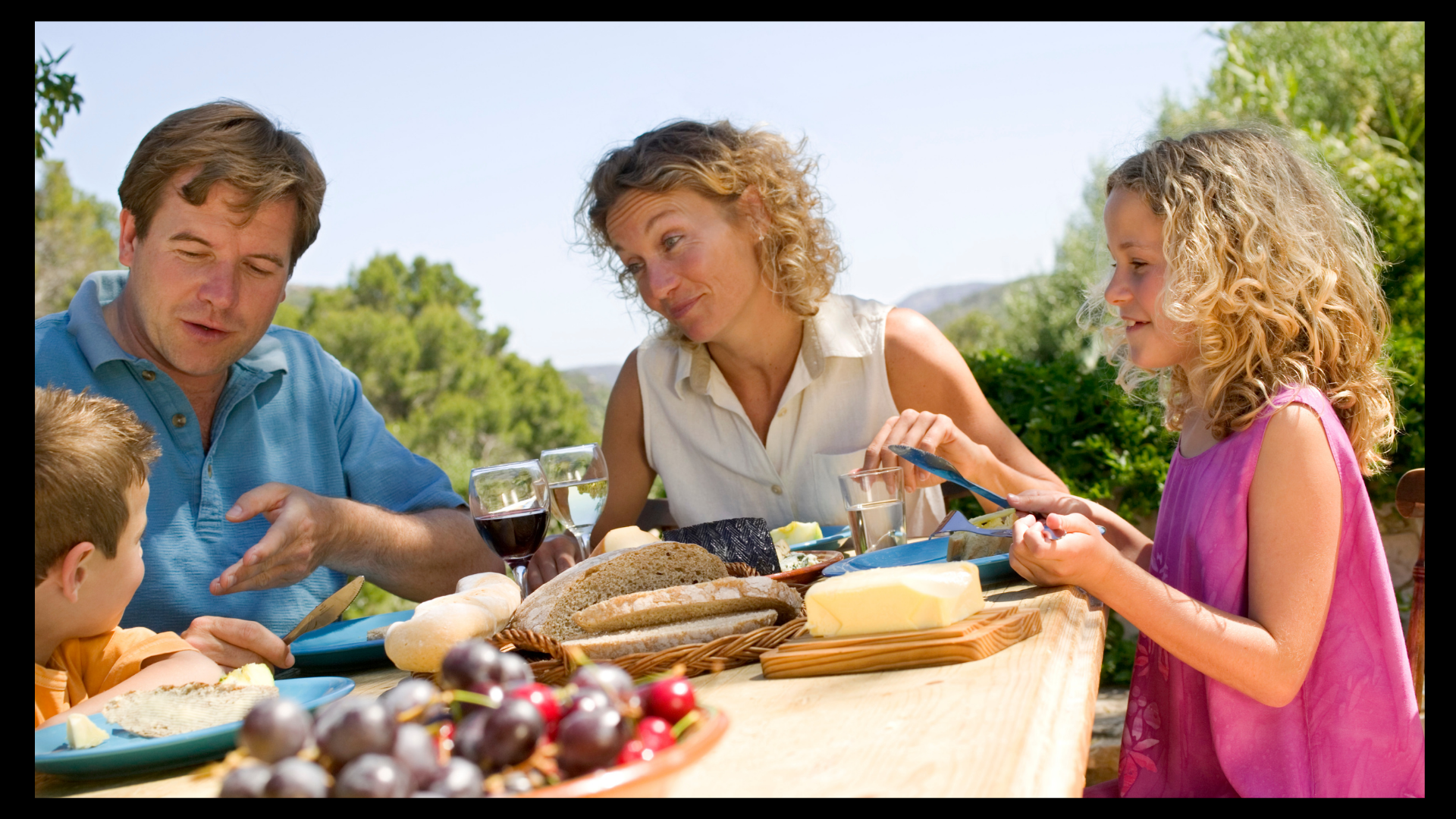
I was raised to say grace but a little gratitude before eating doesn’t have to be religious if you don’t want it to be.
You can merely say, “MMM..this looks good, I’m so thankful for the food we’re eating tonight!” or “We are so grateful for this food we’re eating, it fuels our bodies and minds so we can be strong and healthy.” or a simple, “Rub a dub dub, thanks for the grub!”.
You can even be specific, “I love hamburgers! I am so happy and grateful we’re having this tonight.”
At dinner, we also talk about our “highs and lows” for the day. Others call it “Roses/thorns” but it’s all the same. Talk about your best part of the day (and express gratitude for it) and also your worse part of the day. It’s a fun way to stay connected.
4. Asking Questions/Talk about it
I think this one gets forgotten about sometimes but has proven to be very important. Asking questions about gratitude serves as a tool to help kids develop a deeper sense of gratitude. Researchers at UNC-Chapel Hill in the Raising Grateful Children Project found gratitude to have 4 crucial parts- NOTICE-THINK-FEEL-DO:
1. Noticing: This is taking a look around at all the things you have to be grateful for.
*What are some things you see that you’re grateful for? Do you have people in your life that you’re grateful for? What is the best gift you’ve received?
2. Thinking: Think about why you have received all the good things in your life.
*Who gave these things to you? Why do you think that person gave this to you? Do you think he/she wanted to or had to give it to you? Do you think you should give something back?
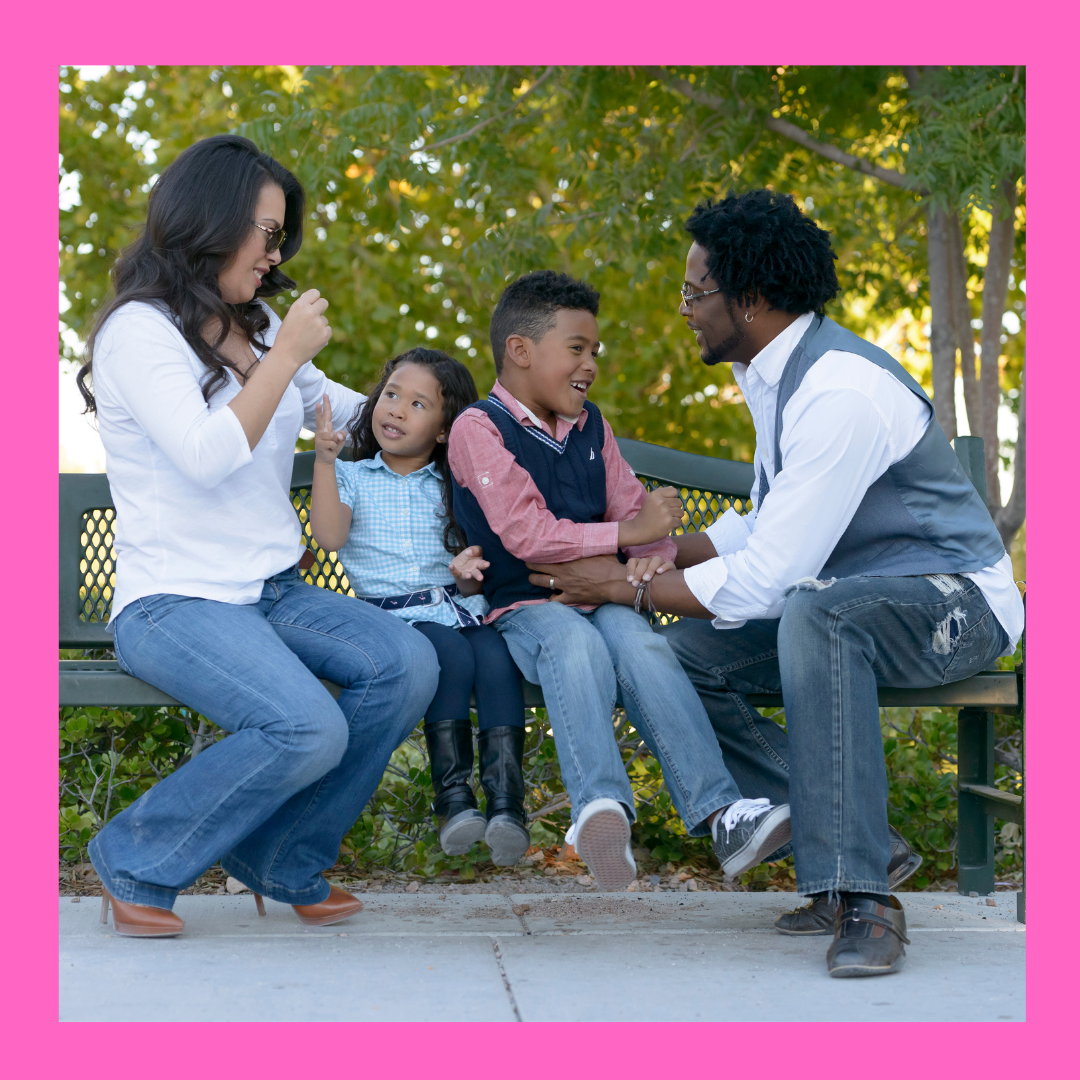
3. Feeling: Feel the positive emotions that you have when receiving gifts.
*How does getting these gifts make you feel? Happy? Loved? Appreciated? Special? What does it feel like on the inside? Warm? Tingly?
4. Doing: Doing something for someone else to show your appreciation.
* Is there a way to show that person how you feel? How can you make someone else feel the way that you do?
Like anything, kids are more likely to do something if they know why. They need to know why it’s important to be grateful. Talk about it.
5. Model It!
For your kids to be grateful, you HAVE to be grateful yourself. Talk about gratitude every day-EVERYDAY…OUTLOUD! This does not have to be a big production either. You can express gratitude in one sentence here and there throughout the day.

Be vocal about:
- getting a green light- “Woo-hoo! Thank you for the green light!”
- getting a parking space
- being on time
- the weather- “I am so grateful for the sun shining today!”. And I really mean it- I love the sun. Or, if you’re like my daughter, be happy and praise the weather gods when it’s raining. She loves the rain! No matter what temperature/climate you like, just say it loud and proud.
- staying safe. When passing an accident or hearing a siren, we say a Hail Mary (for those involved) and thank God that it wasn’t us but if you’re not comfortable with that, you can simply just say, “I hope everyone is okay and I am so grateful that wasn’t us.”
- be grateful for stuff that you’re using or have…”I am so glad we have these plates, I love them.”, “Man, I sure am grateful for these jeans. They are so comfortable.” “Woo-Hoo! I am so glad we found that! Thank you, World!”
Who are you thanking during these random outbursts? Whoever you please- God, Jesus, Universe, Allah, Shiva, your kids, World, etc…The point to say thank you out loud, show your gratitude.
Just remember: Our kids are watching and listening to us like a hawk!
6. Acts of Kindness-Help Others

This teaches them to be unselfish and encourages generosity. Both of these emotions are linked to happiness. Let your children know that it’s the little things that matter.
I had a student once say that he’s just a kid and can’t really help out others. Oh, YES YOU CAN! We ended up having a whole classroom lesson on the little things that others do to make us feel good. In return, it was also a list of things everyone can do to help someone out. Here are some:
- pick up something when someone drops it
- be a friend-listen to someone’s problem and try to brainstorm solutions
- if you’re going to sharpen your pencil, see if anyone near you needs theirs done, too
- hold the door open for the person behind you
- tie someone’s shoes
- stick up for someone when someone is being critical or mean
- write a note saying “hi”, “have a good day” and leave it on their desk
- give a compliment
- draw of nice picture for someone
Even though this list was created in the classroom, most of these can also be done at home.
7. Make them Earn Something
Make sure they don’t always get what they want-it’s okay to say, “no.” Will they be mad? Yep, but that’s okay, they’ll get over it. Having everything handed to you makes it difficult to learn gratitude.
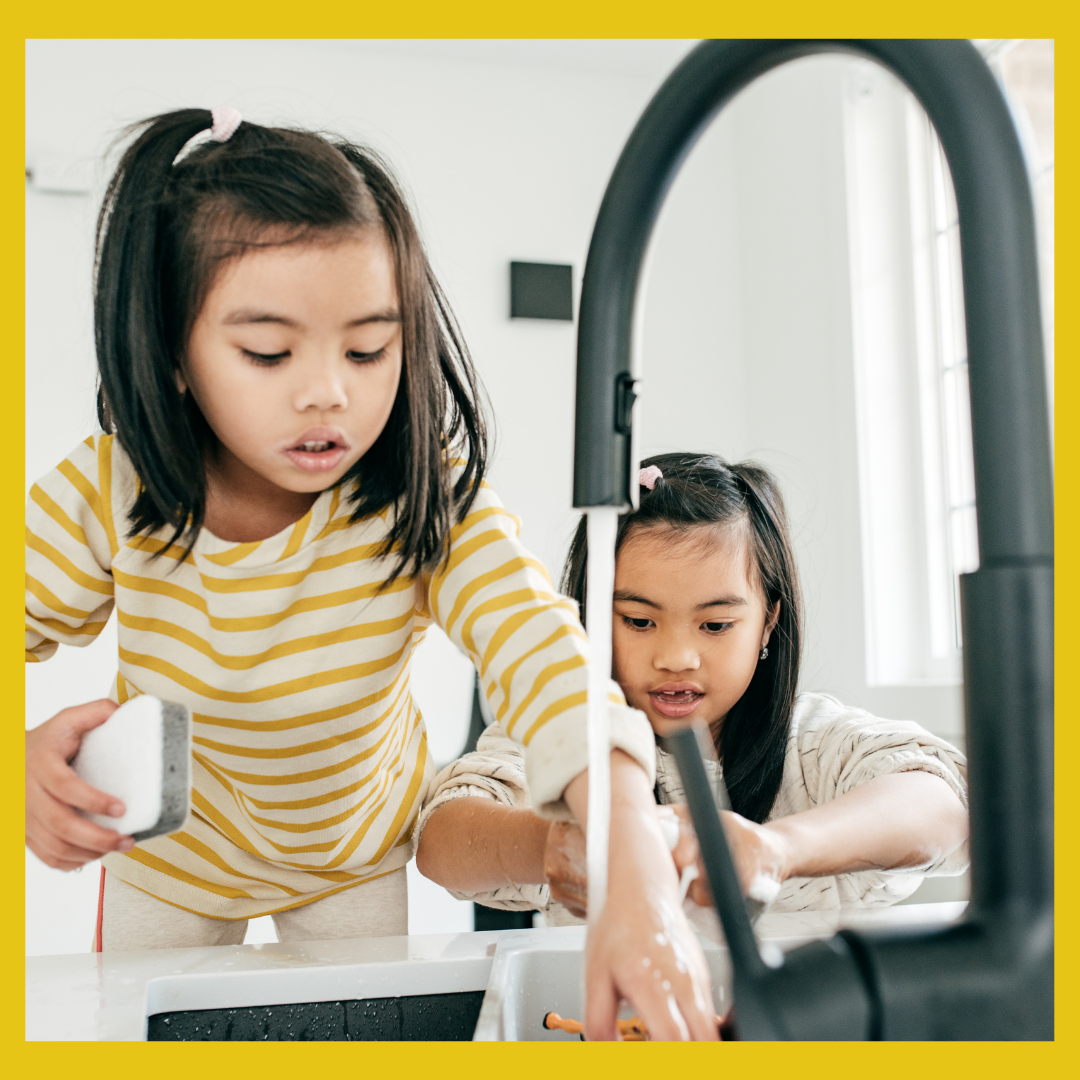
If they have to use their own money to buy something, even it’s gum, they will cherish it more. If it’s a toy, they will take care of it. Think about it, didn’t you take care of your house/apartment more when you had to start paying for it?
Don’t worry if they don’t have any money, let them work it off for you! Extra chores or responsibilities at home can be beneficial for them and YOU!
8. Expose them to those less fortunate
While many families go on missions to foreign places to help the less fortunate, you do not have to do that to get the experience of being grateful for what you have. I’m fairly confident we all have neighborhoods around us that we can go to, to see others that are worse off. Drive around, go to a soup kitchen or any other shelter. There is always someone worse off than you, point it out and let your kids see that.
Another idea is to simply get online. Research underdeveloped countries, you have a wide range to pick from. Discuss and show your kids how others live without toothbrushes or any other little thing that we frequently take for granted. I use toothbrushes because my own girls were amazed that some people don’t have something as simple as that. It’s one of those “little things” that we can be grateful for!
9. Have them give something frequently
- Have kids regularly give a gift of anything (seriously, anything) to someone else. I use the word gift quite loosely since it does not have to be something monetary. My students and kids at home give each other stuff in their mailboxes. It doesn’t matter what it is, the point is to think of someone else, and take the time to give.

- Notes, little trinkets, socks (I’m not really sure why this goes on…), and other gifts from their rooms.
- They can either buy something for a friend (Dollar Tree is awesome for this), give something of theirs to a friend/relative. My kids used to love to wrap up things around the house and then give them to other people in the family. It was the sweetest!
- Drawings are great gifts, too!
- Donate to a charity like Goodwill or Salvation Army
10. Journaling!
I saved the best for last! The most important one that has forever changed my life, my kids, and the atmosphere in my classroom- JOURNALING!
Keeping a gratitude journal at home or in the classroom has been fun and beneficial. Starting the day focusing on the good things in life has improved our home life and classroom. The kids are more positive throughout the day and tend to see the good in people and circumstances.
Journaling allows kids to freely express themselves without fear of disapproval or criticism. Not only is it a good outlet emotionally, but it is also a way to sharpen their writing skills.
The key is to start small. If you like printables, The My 5 Little Things Gratitude Journal is a fantastic place to start!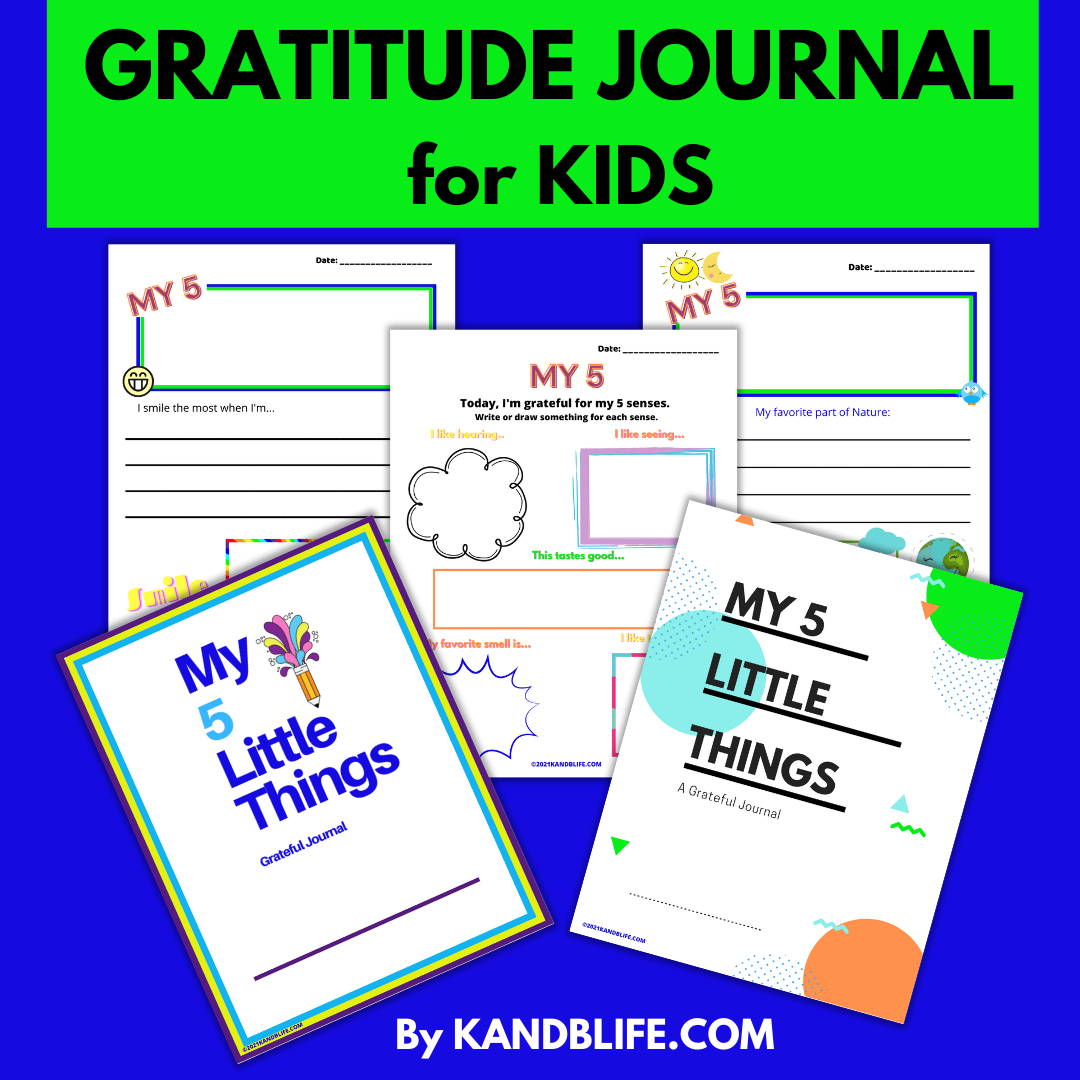
It focuses on writing about 5 LITTLE THINGS each day. It’s themed, also, so you don’t have to help them come up with ideas. This resource was designed after I tried a generic grateful journal (Today, I am grateful for…) in my 1st-grade classroom but was getting the same answers all the time: family, food, my house, my pets, etc…
They didn’t know you can be grateful for anything and everything! So, we started writing about the little things (and silly things): shoelaces, velcro, chalk, desk, spoons, toilets, toothbrushes…you get the idea.
It became fun! They enjoyed filling out the sheets in the morning, they began to enjoy writing, and best of all, their attitudes became positive and happy! You can download a FREE Gratitude Journal HERE!
If you prefer a book form, the Five Minute Journal for Kids is popular and quite well known.
The adult version, Five Minute Journal is used by Tim Ferriss, Emma Watson, and many others!
Gratitude for the little things creates more abundance. More abundance creates more good things in your life to be grateful for. There’s a reason why so many people do it! Give it a try!
Practice! Practice! Practice!
Gratitude does not come naturally, it needs to be practiced. The more you focus on the good, the better you get at it and as a result, more good things come into your life!
Try one, try them all- you’ll notice a difference! Let us know what you’re doing to raise grateful kids in your home and/or classroom!

great reads!
Books:
**I’ve read and reread all of these books. They’ve played a huge part in my search and discovery of gratitude, positivity, happiness, and overall love of life. They’ve been essential in instilling these attitudes in me, my kids at home, and my students at school. They’re affiliates but don’t worry, it’s at NO extra cost to you! Thanks for your support to help us keep the blog going!
For Kids:
For Adults/Older Children/Teens:
Thanks! How Practicing Gratitude Can Make You Happier!
The Happiness Advantage by Shawn Achor
Christian Book: Resisting Happiness by Matthew Kelly





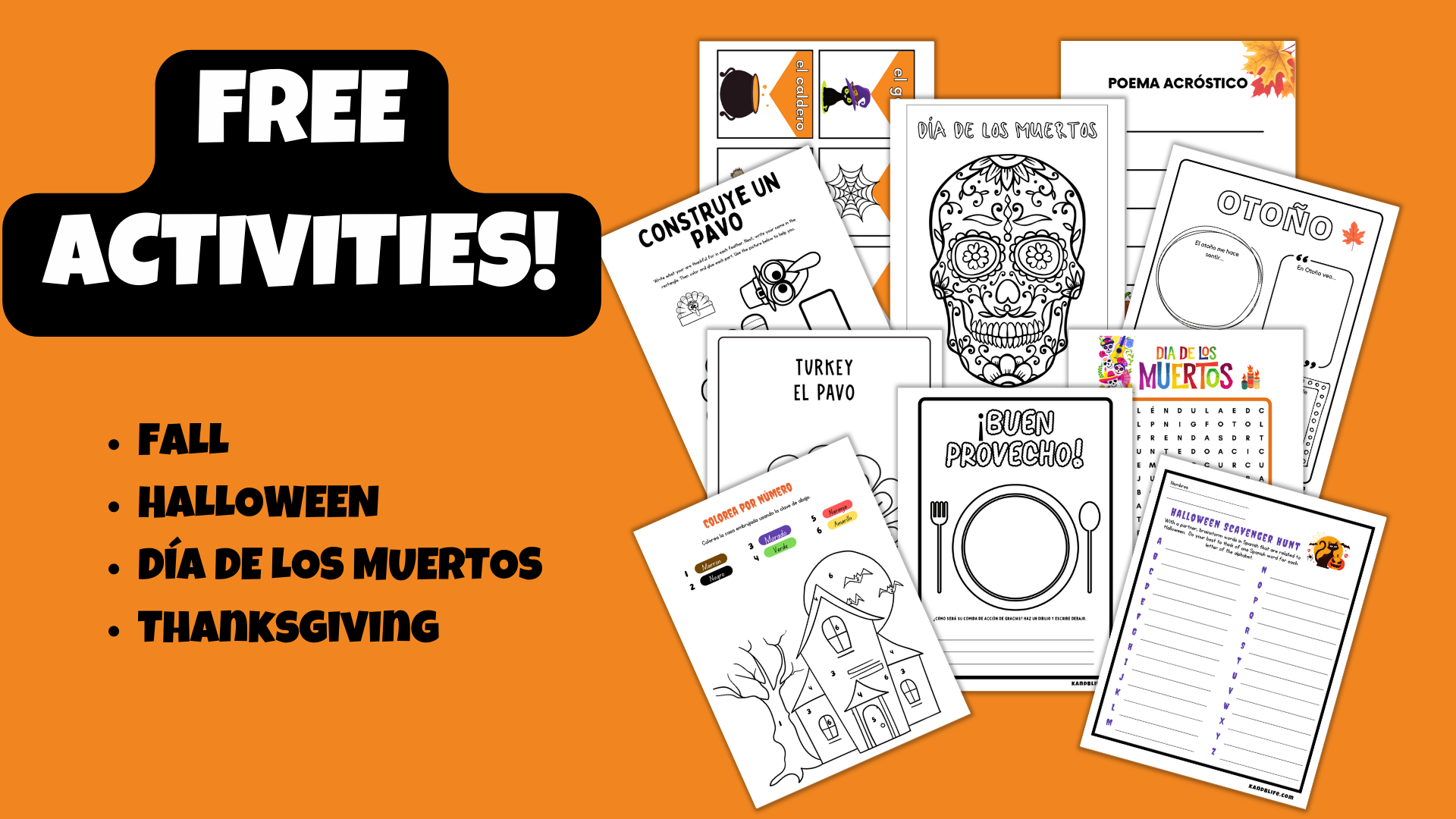
All great tips & so important! We travel also. I find it helps when kids see living conditions in other parts of the world that are not as good as what we have here. Ive also started asking my son at bedtime to tell me one unique thing he’s grateful for that day.
I love the bedtime routine! I bet he gradually tells you more and more things he’s grateful for overtime.
Couldn’t agree more with these tips! I make my kids write thank you notes and it’s always a bit of a painful process but I know it’s teaching them way more which they will appreciate and understand later in life.
YAY! Good for you! It’s so funny because my girls actually notice when someone does not send a thank you now and have realized how good it makes you feel when you DO receive a nice handwritten note. Keep it up!
I love the idea of a secular grace! Giving thanks for heat, food, TV — everyday items we take for granted. That’s something we can do with young toddlers.
I love these suggestions for teaching kids gratitude. A few of them we’re already practicing regularly, but there are others that I will be looking at implementing. Practicing gratitude was something I watched my grandmother do, but it wasn’t practiced with my parents. I reflect now and recognize there are so many blessings in practicing gratitude. 😀
Great tips for every parent! Gratitude is so important in every person’s life. I especially like writing thank you notes (with hearts) to my kids!